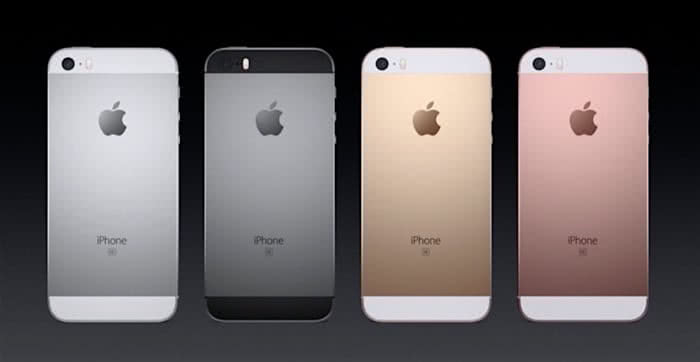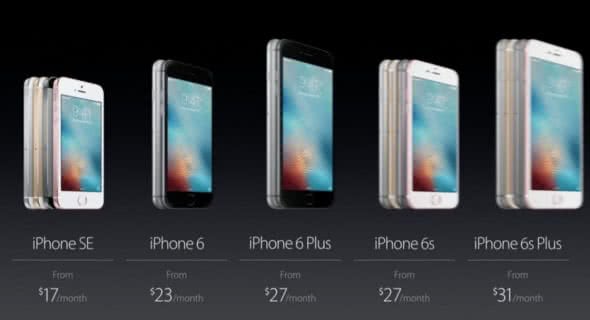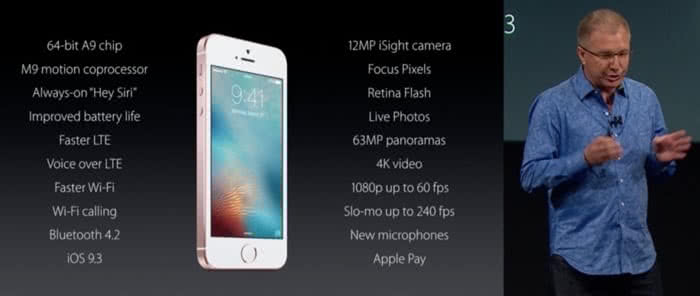iPhone SE vs. iPhone 6s – Which Should You Buy?
![]() The iPhone SE is the first 4-inch model Apple has released since the iPhone 5s came out in late 2013. Apart from the very similar chassis and casing, the devices are entirely different underneath the surface. A number of new features borrowed from the 6s generation have transcended the form factor and are now available in the 4-inch diagonal package, packed with performance and married to the more traditional design of the iPhone 5s, making the new device an awesome upgrade for anyone who is using one of the older devices. In terms of power, the iPhone SE is pretty much equal to the iPhone 6s and packs quite a punch. You might be wondering which iPhone model you should buy when upgrading, which is why we’ve compiled a list of arguments that compare the iPhone SE vs. iPhone 6s, to aid your decision making process.
The iPhone SE is the first 4-inch model Apple has released since the iPhone 5s came out in late 2013. Apart from the very similar chassis and casing, the devices are entirely different underneath the surface. A number of new features borrowed from the 6s generation have transcended the form factor and are now available in the 4-inch diagonal package, packed with performance and married to the more traditional design of the iPhone 5s, making the new device an awesome upgrade for anyone who is using one of the older devices. In terms of power, the iPhone SE is pretty much equal to the iPhone 6s and packs quite a punch. You might be wondering which iPhone model you should buy when upgrading, which is why we’ve compiled a list of arguments that compare the iPhone SE vs. iPhone 6s, to aid your decision making process.
iPhone SE vs. iPhone 6s: Comparison
Specifications
The iPhone SE has a 4-inch retina screen with the same resolution as an iPhone 5s, which is actually an advantage if you prefer the form factor, as it allows the chipset to deliver more power per pixel in gaming and media apps. It runs on the Apple A9 chip with a 64-bit architecture and the M9 motion coprocessor. The back-facing camera has a resolution of 12 MP and records 4K video. Its front-facing camera offers 1.2 MP and records 720p video. Touch ID of the first generation is included. You can get it with 16 GB or 64 GB of storage. There are four color options: Silver, Rose Gold, Gold, Space Gray. It will be available on the 31st of March, with preorder starting on the 24th.
The iPhone 6s has a 4.7-inch retina screen with a higher resolution. It also runs on the Apple A9 chip with a 64-bit architecture and includes the M9 for fitness tracking and other applications. The back-facing camera is identical to the SE with its 12 MP and 4K video. The front-facing camera delivers 5 MP, which is more, but the 720p video option is identical. Touch ID of the second generation is included, which means that you can unlock and authenticate much faster. You can get it in 16 GB, 64 GB and 128 GB storage options. The same color options apply: Silver, Rose Gold, Gold, Space Gray. It is available right now.

Design
The iPhone SE is, as we’ve already stated above, closely related to the iPhone 5s in terms of its design. The only notable difference is the rounded edge of the display glass. It is noticeably smaller with its 4-inch diagonal, when compared to the 4.7 inch diagonal of the iPhone 6s. There is a 30 gram weight difference, with the iPhone SE coming in at 113 grams. The iPhone SE is .5mm thicker, when compared to the 6s. If you prefer the old design and the smaller form factor, which can be easily operated with one hand, then the iPhone SE is the way to go. In terms of color, Apple is offering the same choice of four color finishes for both products.

Pricing
The iPhone SE is noticeably cheaper and that is pretty much the point of having this device available, as it is also (but not solely) aimed at the budget market or entry level users. The iPhone 6s starts at $649.00 for the 16 GB option, versus $399.00 for the smallest storage option for the iPhone SE.
For users with small budgets, $249.00 is a steep discount and certainly something to keep in mind when planning an upgrade.

Technology & Performance
Both devices work with Apple Pay, as they include NFC technology. The cameras are almost identical and deliver fantastic photography at 12 MP and videos in 4K resolution, as well as slow motion clips with up to 240 frames per second.
With the exemption of the selfie camera, which is noticeably better on the 6s due to the higher resolution. Both offer Touch ID and the latest A9 chip with the M9 motion coprocessor. The latest LTE bands are supported in both, as well as Bluetooth. The wireless “Hey Siri” feature is also active in both models.
What you will be missing out on when choosing the iPhone SE in terms of features: 3D Touch is not available on the smaller device.

Summary
Overall, the iPhone SE and iPhone 6s are pretty much on equal footing despite minor differences with regards to the selfie cam and 3D Touch. It is more a matter of preference for size and of course a matter of budget. If you like smaller iPhones, go for the SE, you won’t really miss anything.
But if you prefer to type on a spacious keyboard, watch movies and shows on your smartphone or simply like large screens, go for the iPhone 6s or the iPhone 6s Plus. Either way, all of these choices are excellent and offer a great upgrade for Android users or if you are currently on an iPhone 4, 4S, 5, 5s or even an iPhone 6 and would like to have a better camera and more power under the hood.
Tip: In another article we show you our top 10 iPhone SE tips & tricks you need to know!